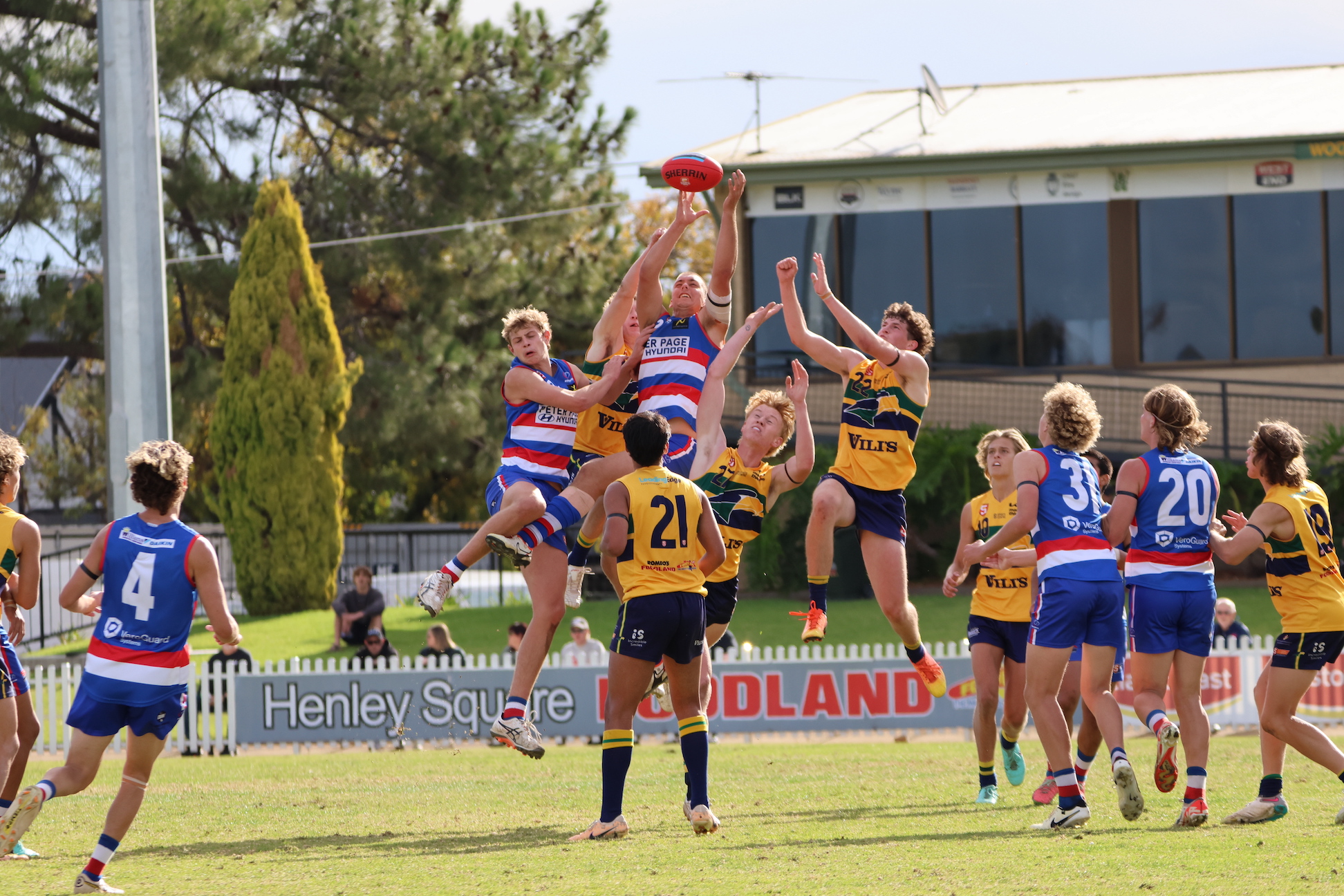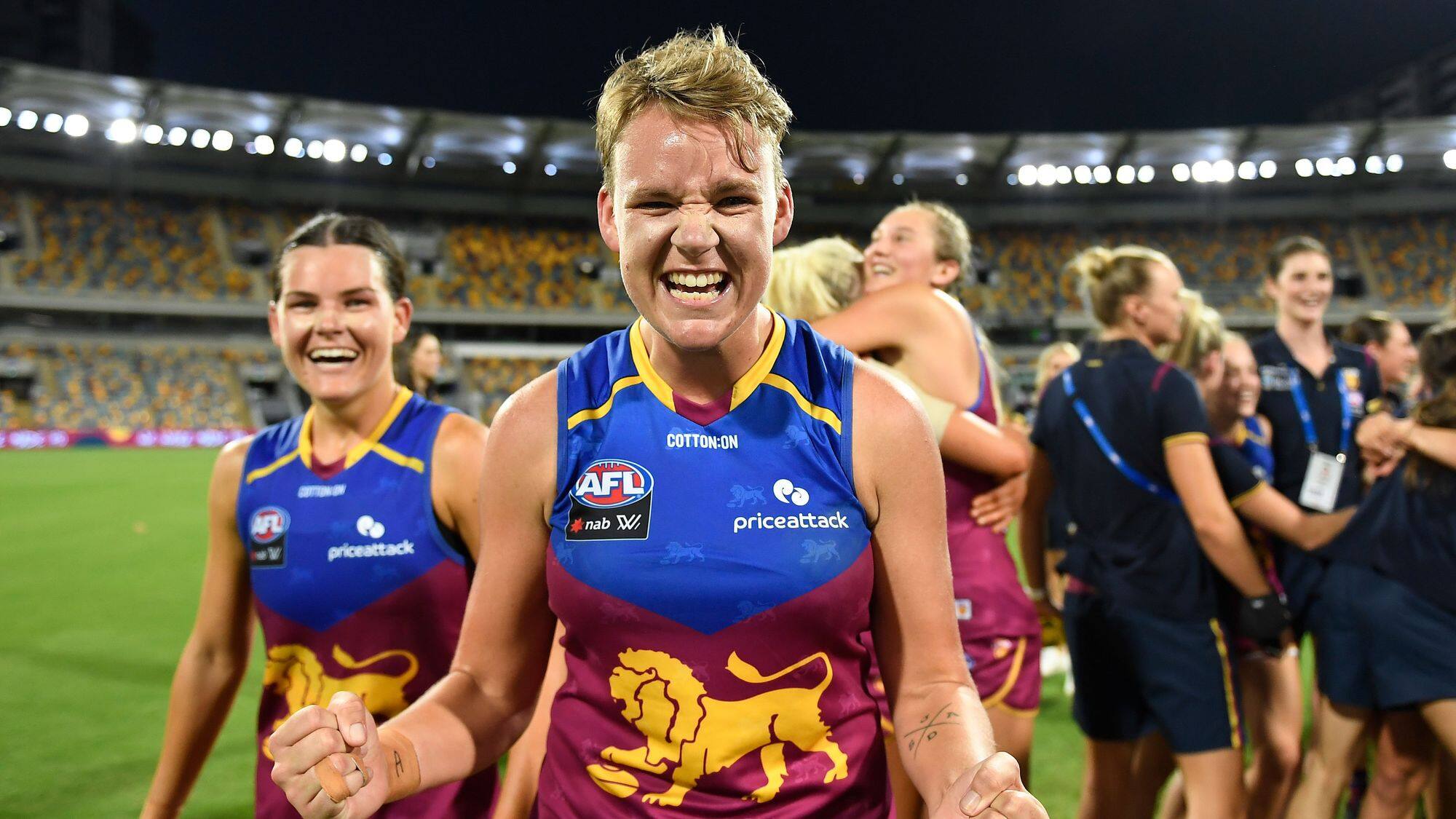MELBOURNE earned its first-ever finals berth in 2020 after years of near-misses, claiming a thrilling maiden post-season win in the process to cap off its successful season. Under the tutelage of Mick Stinear, the seasoned Demons side notched four wins despite enduring harsh spates of key injuries and absentees throughout the year, as they enter their premiership window. The return of skipper Daisy Pearce and elevation of Sarah Perkins to the senior squad buoyed the Dees at different points in the year, with the squad’s ability to adapt into makeshift situations its key feature. Relive the highs and lows of Melbourne’s campaign, with a nod to its most outstanding players in our season review.
RECORD: 3rd (B), 4-2 (1-0 finals), 164.5%
RESULTS:
R1: defeated North Melbourne by 2 points
R2: defeated Western Bulldogs by 12 points
R3: lost to St Kilda by 5 points
R4: defeated Collingwood by 20 points
R5: defeated West Coast by 59 points
R6: lost to Carlton by 16 points
SF: defeated GWS by 3 points
A stirring Round 1 upset over pre-season premiership fancy, North Melbourne set the ball rolling in an ideal way for Melbourne, and it was backed up by another solid win against the youthful Western Bulldogs in Round 2. But the early momentum was brought to a halt as the Demons unforgivably went down to St Kilda in a low-scoring affair, with subsequent wins over Collingwood and West Coast helping them make the ground back up. For all that good form in consecutive wins, Carlton put another loss on Melbourne’s record via its strong defence, but it was soon forgotten as the Dees romped home to snatch a thrilling finals victory against GWS.
SEASON HIGH: Mithen rescues the Dees from finals hell
There were many highs to choose from among the key moments in Melbourne’s year – knocking off North Melbourne in Round 1, and the returns of Pearce and Perkins to name a couple – but none of them come close to this triumph. Staring a finals defeat in the face with over two goals to make up at the last change, the Dees leant on an unlikely hero to save the day. Enter Lily Mithen, who booted her first two career goals to help her side claim an incredible comeback win at the death in an instant finals classic.
SEASON LOW: Going down to expansion side, St Kilda
For the many lofty heights have come some pretty devastating lows for Melbourne supporters over the years, and this one came out of nowhere. After two impressive wins to open the year, Melbourne was expected to feast on winless expansion side, St Kilda. Instead, the Demons could only muster 1.8 as the Saints came from behind at the final break to claim an incredible upset win – the first in their short history. Melbourne’s tendency for losing winnable games had reared its head once again in a costly lapse.
FIVE KEY PERFORMERS:
Karen Paxman (21.3 disposals, 71% efficiency, 3 marks, 4.1 tackles, 5.6 clearances, 2.3 rebound 50s, 3.4 inside 50s, 337 metres gained)
After becoming Melbourne’s prime midfield mover in the absence of Pearce last season, Paxman continued her incredible run of form to stake her claim as one of the competition’s elites. A deserving All Australian squad member, the durable engine room operator led the league for clearances, and her club for disposals, contested possessions, inside 50s, rebound 50s, and metres gained in a remarkable campaign.
Daisy Pearce (14.9 disposals, 69% efficiency, 2.7 marks, 5.7 intercept possessions, 2.9 tackles, 1.7 rebound 50s, 1.6 inside 50s)
Arguably the greatest women’s player of all time prior to the AFL Women’s era, Pearce returned to competition in emphatic style, appearing in all seven games as skipper of her side. Utilised in a slightly different role off half-back, the 31-year-old showcased her terrific skill on the ball in the defensive half and was named in the All Australian squad. Still got it.
Kate Hore (12.7 disposals, 3.3 marks, 3.9 tackles, 2.4 inside 50s, 5 goals)
The third of Melbourne’s All Australian squad members is Hore, who maintained her high standard of performance in another terrific AFLW campaign. The skilful forward continues to find avenues to goal having booted five as her side’s equal-leading goalkicker, but also works hard up the ground to provide avenues into the forward half. Has not missed a beat since her 2018 debut.
Libby Birch (12.1 disposals, 3.6 marks, 6.4 intercept possessions, 1.6 tackles, 2.1 rebound 50s)
Melbourne’s boom recruit coming into 2020 was Birch, and the defender delivered on her already impressive reputation. The former-Bulldog slotted in seamlessly to the Demons’ back five, leading her new side in intercept possessions across all seven games. Birch was the perfect partner in crime to Peace in defence, intercepting with ease and combining with the champ in transition.
Elise O’Dea (14.3 disposals, 1.9 marks, 3.9 tackles, 3 clearances, 2 inside 50s)
The foundation Demon was once again a reliable outlet for her side through midfield, providing that hard inside edge through the engine room alongside the likes of Paxman. O’Dea’s numbers may have been slightly down in comparison to other years, but the former-captain’s value comes through in her selfless work around the ball and undeniable leadership qualities.
THE YOUNG GUN:
Tyla Hanks (10.4 disposals, 1.3 marks, 4.7 tackles, 1.4 inside 50s)
The Demons may possess somewhat of an ageing list, but also lay claim to one of the competition’s most exciting young guns in Hanks. After steadily entering the elite level in a forward role throughout her rookie season, the Gippsland Power graduate enjoyed more midfield minutes this year, and led her side for tackles while showing plenty of promise.
THE MAKESHIFT RUCK
Eden Zanker (10.3 disposals, 1.9 marks, 3.6 tackles, 11 hitouts, 1.7 inside 50s, 4 goals)
Zanker was one to step up and shine in the wake of Melbourne’s desperate injury situation, adding ruck craft to her game while also remaining a threat up forward. In the absence of Lauren Pearce, the 20-year-old used her sizeable leap at 183cm to lead her club for hitouts, and booted four goals during her time inside forward 50. Another promising youngster who thrived in a different role.
THE SPEARHEAD:
Shelley Scott (11.1 disposals, 4 marks, 3.7 tackles, 2.7 inside 50s, 3.6 score involvements, 5 goals)
While she may stack up at the same height as fellow leading goalkicker, Hore, Scott played the more traditional key forward role of the two this season. The 170cm spearhead’s five goals made for an equal career-best haul, and her work as a marking target was sensational. Scott led the club for marks (including contested) and score involvements in an impressive season.
VERDICT:
Melbourne is perhaps one of the sides which would have been most disappointed by the shortened season given its ageing list, the fact it had beaten North Melbourne, and that it had not yet faced Fremantle. The premiership window seems to remain ajar, but time may run out soon as the next generation takes over from foundation players. Still, the Demons were right up there at their best and should be in for another tilt at finals next year.






















